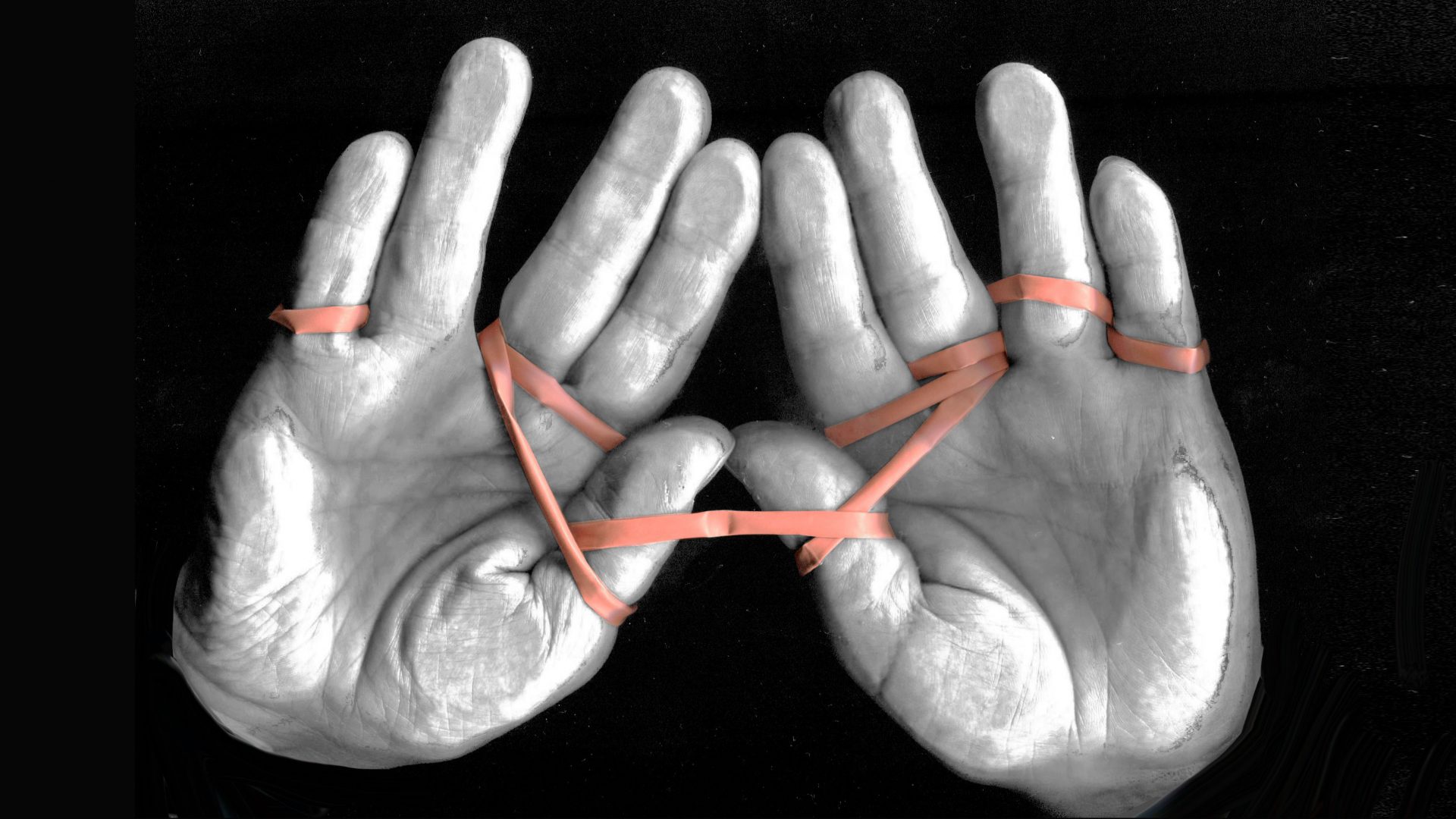
Unbinding tied hands and finding bonds with hands. Time and again, depictions of hands show connectedness: between people but also between people and God. Gestures of such bonding are found on the threshold between writing and image, seeming to be writing similar to typeface rather than writing as image.
In Jewish cemeteries, for example, there are representations of hands next to letters on gravestones. Hands, hand gestures – such as the gesture of blessing – and their representations are not affected by the prohibition of images. The gesture of blessing connects the religions, for example when the Aaronite blessing (בִּרְכַּת כֹּהֲנִים birkat kohanim) is used in Christian services.
The gesture of blessing becomes ambiguous as soon as it is taken out of its context. If the person giving the blessing, acting on behalf of God, is not visible, the meaning of the gesture can become uncertain. But it also shows itself to be a gesture of solidarity independent of individual religious communities.
Thus released from its tie back (religio) to God or from its use on gravestones, the gesture can open up to other meanings, depending on the perspective of those observing or reading it. It can literally connect in a new way with things and traces, objects and the representational, features and movements.
rk